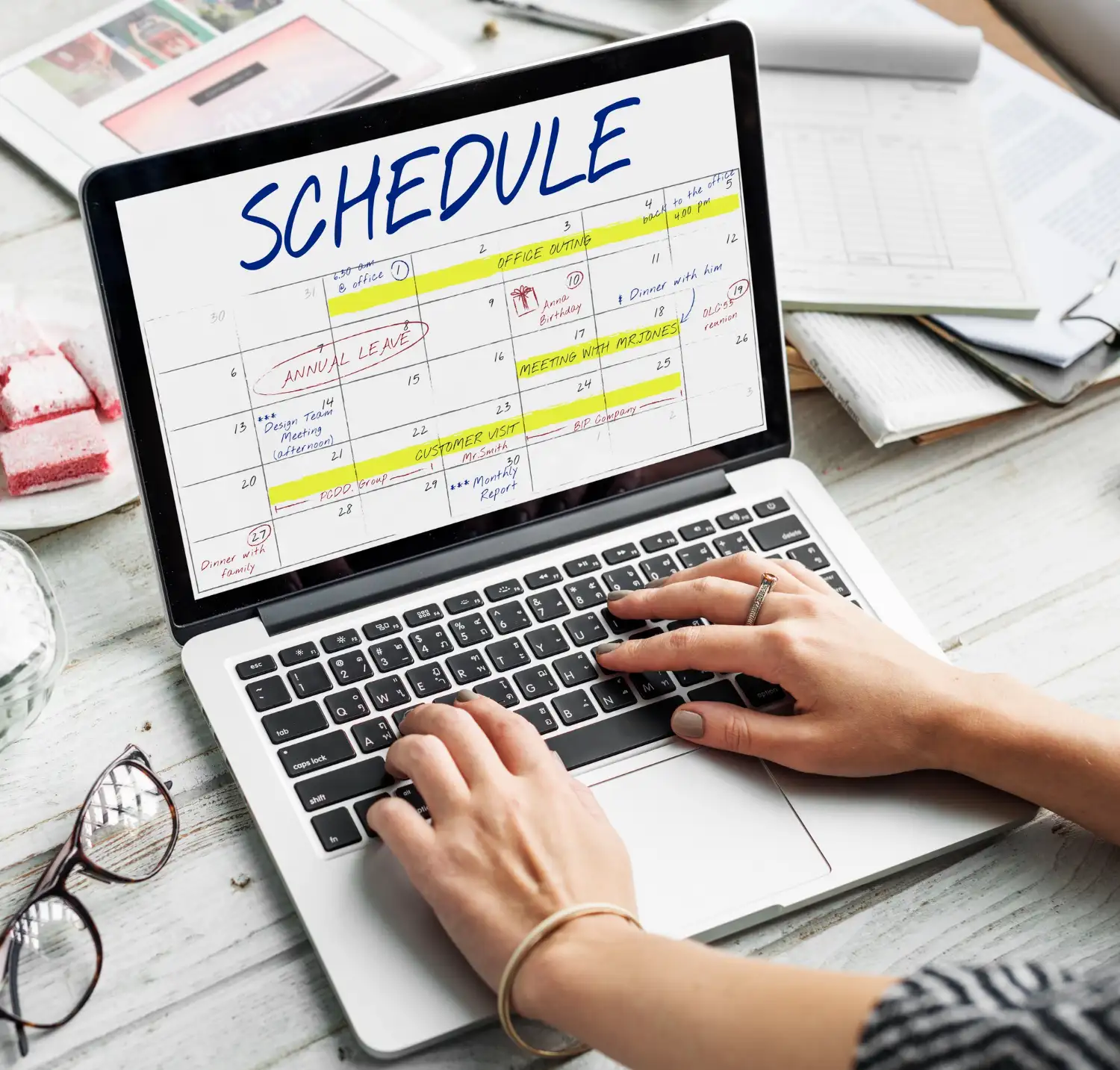Organizing How to Organize Your Blogging Schedule can be a game-changer, especially for Indian bloggers who juggle multiple responsibilities. Whether you’re a beginner or a seasoned blogger, having a well-structured blogging schedule can help you stay consistent, manage your time efficiently, and boost your productivity. In this comprehensive guide, we’ll explore practical tips and strategies to help you create the best blogging schedule for beginners and seasoned bloggers alike. We’ll also delve into effective time management techniques, essential blogging tools, and habits that can lead to blogging success.
As a blogger, one of the most challenging aspects is maintaining consistency and ensuring that your content reaches your audience regularly. This is where a well-organized blogging schedule comes into play. In this article, we’ll provide you with blogging schedule tips and strategies to help you manage your time effectively and achieve your blogging goals.
Why Organizing Your Blogging Schedule is Important
Organizing your blogging schedule offers several benefits:
- Consistency: Regularly posting content keeps your audience engaged and helps in building a loyal following.
- Productivity: A well-planned schedule ensures that you make the most of your time and resources.
- Stress Reduction: Knowing what you need to do and when reduces last-minute stress and improves the quality of your work.
- SEO Benefits: Regular updates to your blog can improve your site’s SEO ranking, leading to increased visibility and traffic.
Getting Started: Assess Your Current Blogging Routine
Before you create a new blogging schedule, it’s crucial to assess your current routine. Here are some questions to consider:
- How often do you currently post new content?
- What are your peak productivity times?
- Which tasks take up the most time?
- Are there any patterns or habits that hinder your productivity?
By answering these questions, you can identify areas for improvement and tailor your schedule to better suit your needs.
How to Create a Blogging Schedule

Creating a blogging schedule involves several steps, including setting goals, choosing the right tools, and planning your content. Here’s a detailed guide to help you get started.
Setting Realistic Goals
Your blogging goals should be Specific, Measurable, Achievable, Relevant, and Time-bound (SMART). Here are some examples:
- Specific: “I will publish two blog posts per week.”
- Measurable: “I will increase my blog traffic by 20% in the next three months.”
- Achievable: “I will dedicate two hours every day to writing and editing.”
- Relevant: “I will focus on topics that are relevant to my audience’s interests.”
- Time-bound: “I will complete and publish my posts by Friday each week.”
Choosing the Right Tools
Using the right tools can streamline your blogging process and make it easier to stick to your schedule. Here are some popular tools for bloggers:
- Content Calendars: Tools like Trello, Asana, or Google Calendar can help you plan and organize your content.
- Writing Tools: Grammarly and Hemingway can improve your writing quality and speed up the editing process.
- SEO Tools: Tools like RankMath SEO and SEMrush can help optimize your content for search engines.
Planning Your Content
Planning your content in advance ensures that you always have fresh ideas and can maintain a consistent posting schedule. Here are some tips for content planning:
- Brainstorm Topics: Make a list of potential blog post ideas and categorize them by themes.
- Create an Editorial Calendar: Plan your posts for the upcoming month or quarter, including deadlines and publishing dates.
- Batch Write: Write multiple posts in one sitting to save time and ensure you always have content ready.
Effective Time Management for Bloggers
Effective time management is crucial for maintaining a consistent blogging schedule. Here are some strategies to help you manage your time better:
Daily Blogging Routine
A daily routine can help you stay focused and productive. Here’s a sample daily routine for bloggers:
- Morning: Dedicate the first hour of your day to writing. This is often when your mind is freshest.
- Mid-Morning: Spend an hour on research and brainstorming new ideas.
- Afternoon: Edit and proofread your posts, then schedule them for publishing.
- Evening: Engage with your audience by responding to comments and promoting your posts on social media.
Weekly Blogging Schedule
A weekly schedule helps you manage larger tasks and ensures that you stay on track. Here’s a sample weekly schedule:
| Day | Task |
|---|---|
| Monday | Plan and outline blog posts for the week |
| Tuesday | Write the first blog post |
| Wednesday | Edit and proofread the first blog post |
| Thursday | Write the second blog post |
| Friday | Edit and proofread the second blog post |
| Saturday | Schedule posts and create social media content |
| Sunday | Review analytics and plan for the next week |
Tips for Consistent Blogging
Consistency is key to successful blogging. Here are some tips to help you stay consistent:
- Set Deadlines: Treat your blog like a job and stick to your deadlines.
- Stay Organized: Keep all your ideas, drafts, and research in one place.
- Take Breaks: Avoid burnout by taking regular breaks and time off when needed.
- Seek Feedback: Engage with your audience and ask for their input to improve your content.
How to Organize Your Blogging Schedule ?
here is a structured table to help you organize your blogging schedule effectively:
| Day | Morning Task | Midday Task | Afternoon Task | Evening Task |
|---|---|---|---|---|
| Monday | Brainstorm and outline blog post ideas for the week | Research and gather resources | Draft the first blog post | Engage with readers and promote posts |
| Tuesday | Write the first blog post | Edit and proofread the first blog post | Create graphics and visuals for the post | Schedule the first blog post |
| Wednesday | Plan and outline the second blog post | Research and gather resources for the second post | Write the second blog post | Engage with readers and respond to comments |
| Thursday | Edit and proofread the second blog post | Create graphics and visuals for the second post | Draft social media posts for promotion | Schedule the second blog post |
| Friday | Analyze blog performance and review analytics | Plan content for next week | Engage with readers and respond to comments | Network with other bloggers and collaborations |
| Saturday | Plan and schedule social media posts | Update older posts and optimize for SEO | Conduct keyword research for future posts | Relax and take a break |
| Sunday | Reflect on the week’s progress | Plan personal development (read/blogging courses) | Prepare for the upcoming week’s tasks | Review and adjust the editorial calendar |
Explanation:
- Morning Task: These tasks are designed to utilize your fresh morning energy for brainstorming, planning, and writing content.
- Midday Task: Midday is ideal for research, editing, and creating visuals since these activities require a different kind of focus.
- Afternoon Task: Afternoons can be used for finalizing content and preparing it for publication.
- Evening Task: Evenings are perfect for engagement and planning since these tasks can be done in a more relaxed manner.
Blogging schedule Tips for Effective Use:
- Consistency: Stick to your schedule to build a routine.
- Flexibility: Adjust tasks as needed based on your productivity and workflow.
- Tools: Use tools like Trello for planning, Grammarly for editing, and Hootsuite for scheduling social media posts.
- Breaks: Ensure you take regular breaks to avoid burnout.
- Review: Regularly review and adjust your schedule based on what works best for you.
By following this structured table, you can efficiently manage your blogging schedule and maintain a consistent and productive blogging routine.
FAQs
1. How often should I update my blog?
It’s essential to find a balance between quality and quantity. For beginners, posting once or twice a week is a good starting point. As you become more comfortable, you can increase the frequency.
2. What tools can help me organize my blogging schedule?
Some popular tools include Trello for content planning, Grammarly for writing assistance, and Yoast SEO for optimizing your posts.
3. How can I stay motivated to blog consistently?
Set realistic goals, celebrate small achievements, and engage with your audience for motivation. Additionally, joining blogging communities can provide support and inspiration.
4. What should I include in my editorial calendar?
Your editorial calendar should include blog post topics, deadlines, publishing dates, and any relevant notes or research links.
5. How can I improve my time management skills as a blogger?
Prioritize tasks, use time-blocking techniques, and eliminate distractions to improve your time management skills. Using tools like Pomodoro timers can also help you stay focused.
Conclusion
Organizing your blogging schedule is crucial for maintaining consistency, boosting productivity, and achieving your blogging goals. By setting realistic goals, using the right tools, and planning your content in advance, you can create a schedule that works for you. Remember to prioritize time management and develop effective blogging habits to stay on track. With these blogging schedule tips, you’ll be well on your way to blogging success.
Implement these strategies, and you’ll find that managing your blog becomes more straightforward and more rewarding. Happy blogging!




